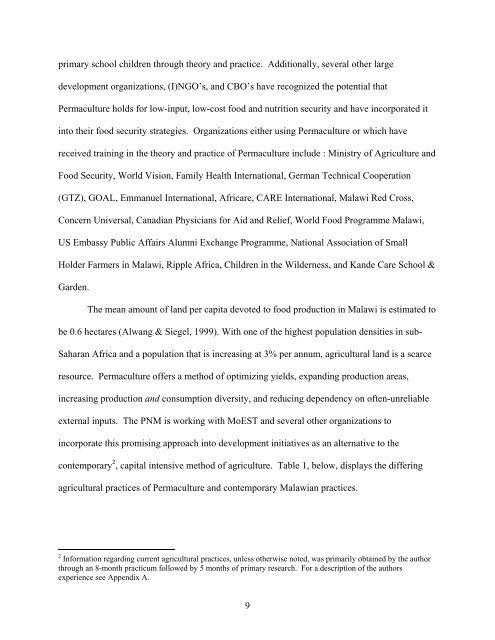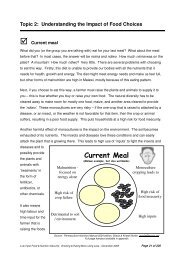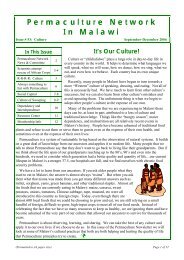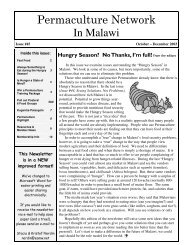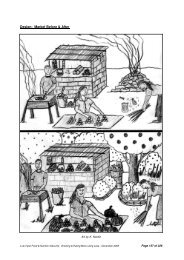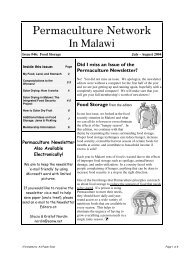Permaculture, Final Capstone Paper 5-26, Hope - Never Ending Food
Permaculture, Final Capstone Paper 5-26, Hope - Never Ending Food
Permaculture, Final Capstone Paper 5-26, Hope - Never Ending Food
You also want an ePaper? Increase the reach of your titles
YUMPU automatically turns print PDFs into web optimized ePapers that Google loves.
primary school children through theory and practice. Additionally, several other large<br />
development organizations, (I)NGO’s, and CBO’s have recognized the potential that<br />
<strong>Permaculture</strong> holds for low-input, low-cost food and nutrition security and have incorporated it<br />
into their food security strategies. Organizations either using <strong>Permaculture</strong> or which have<br />
received training in the theory and practice of <strong>Permaculture</strong> include : Ministry of Agriculture and<br />
<strong>Food</strong> Security, World Vision, Family Health International, German Technical Cooperation<br />
(GTZ), GOAL, Emmanuel International, Africare, CARE International, Malawi Red Cross,<br />
Concern Universal, Canadian Physicians for Aid and Relief, World <strong>Food</strong> Programme Malawi,<br />
US Embassy Public Affairs Alumni Exchange Programme, National Association of Small<br />
Holder Farmers in Malawi, Ripple Africa, Children in the Wilderness, and Kande Care School &<br />
Garden.<br />
The mean amount of land per capita devoted to food production in Malawi is estimated to<br />
be 0.6 hectares (Alwang & Siegel, 1999). With one of the highest population densities in sub-<br />
Saharan Africa and a population that is increasing at 3% per annum, agricultural land is a scarce<br />
resource. <strong>Permaculture</strong> offers a method of optimizing yields, expanding production areas,<br />
increasing production and consumption diversity, and reducing dependency on often-unreliable<br />
external inputs. The PNM is working with MoEST and several other organizations to<br />
incorporate this promising approach into development initiatives as an alternative to the<br />
contemporary 2 , capital intensive method of agriculture. Table 1, below, displays the differing<br />
agricultural practices of <strong>Permaculture</strong> and contemporary Malawian practices.<br />
2 Information regarding current agricultural practices, unless otherwise noted, was primarily obtained by the author<br />
through an 8-month practicum followed by 5 months of primary research. For a description of the authors<br />
experience see Appendix A.<br />
9


